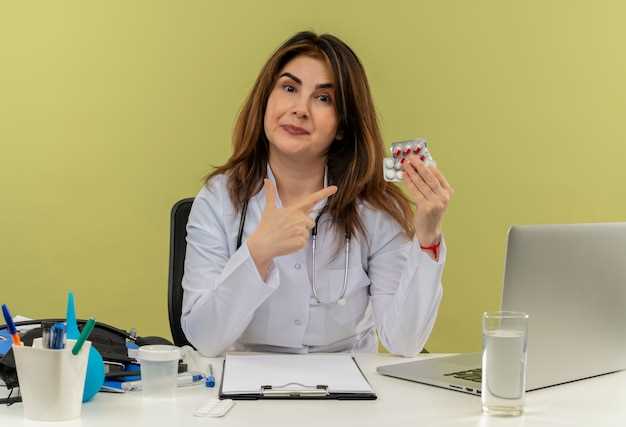
When it comes to managing your health, it’s important to know how different medications interact. If you’re taking levothyroxine and atorvastatin, you may be wondering if it’s safe to take them both at the same time. Let’s explore the potential interactions and considerations.
Understanding the Interaction
When considering the interaction between levothyroxine and atorvastatin, it is important to understand how these medications work in the body. Levothyroxine is a synthetic form of thyroid hormone that is used to treat hypothyroidism, a condition where the thyroid gland does not produce enough hormones. Atorvastatin, on the other hand, is a statin medication that is used to lower cholesterol levels in the blood.
Both levothyroxine and atorvastatin can be crucial for managing certain health conditions, but it is essential to be aware of how they may interact with each other when taken together. Consulting with a healthcare provider is vital in determining the appropriate dosage and timing for these medications to minimize any potential interactions and ensure optimal treatment outcomes.
Levothyroxine and Atorvastatin Overview
When combining levothyroxine and atorvastatin, it is important to be aware of the potential interactions between these medications. Both drugs can affect the way the other is metabolized in the body, potentially leading to increased or decreased levels of one or both medications.
Levothyroxine is a thyroid hormone replacement medication used to treat hypothyroidism, while atorvastatin is a statin medication used to lower cholesterol levels. Combining these two medications can have varying effects on the body, depending on individual factors such as dosage, timing of administration, and overall health status.
It is important to consult with a healthcare provider before combining levothyroxine and atorvastatin to ensure that the medications are being taken safely and effectively. The healthcare provider can provide guidance on the proper dosage, timing of administration, and potential risks and benefits of taking both medications together.
Effects of Combining Medications
Combining levothyroxine and atorvastatin can have both positive and negative effects on the body. While levothyroxine is a medication used to treat an underactive thyroid, atorvastatin is used to lower cholesterol levels. When taken together, the effects of these medications can interact in various ways.
One potential positive effect of combining these medications is the management of cholesterol levels in individuals with hypothyroidism. Since hypothyroidism can lead to elevated cholesterol levels, taking atorvastatin along with levothyroxine can help in controlling cholesterol levels and reducing the risk of heart disease.
On the other hand, there are also potential negative effects to consider. Combining these medications may increase the risk of certain side effects such as muscle pain, weakness, and liver abnormalities. It is important to monitor for any adverse effects and consult a healthcare provider if any symptoms arise.
Risks and Benefits
When taking levothyroxine and atorvastatin together, it is important to consider the potential risks and benefits. Combining these medications can increase the risk of certain side effects, including muscle pain, weakness, and liver problems. However, the benefits of taking both medications may outweigh the risks for some patients.
Levothyroxine is commonly prescribed to treat hypothyroidism, while atorvastatin is used to lower cholesterol levels. When used together, these medications can help manage both conditions effectively. It is essential to follow the guidance of your healthcare provider and monitor any potential side effects closely.
Before starting a regimen that includes both levothyroxine and atorvastatin, it is crucial to discuss the risks and benefits with your doctor. They can provide personalized advice based on your individual health situation and may recommend adjustments to your treatment plan to minimize any potential adverse effects.
Guidelines for Taking Both
When taking levothyroxine and atorvastatin together, it is important to follow certain guidelines to ensure their effectiveness and minimize any potential risks.
1. Take as directed: Follow your healthcare provider’s instructions on how to take both medications. Take them at the recommended times and in the correct dosage.
2. Separate administration: If possible, try to take levothyroxine and atorvastatin at different times of the day to avoid any potential interactions between the two drugs.
3. Regular follow-ups: Keep regular appointments with your healthcare provider to monitor your progress and adjust the dosage if needed.
4. Inform your healthcare provider: Make sure your healthcare provider is aware of all the medications you are taking, including over-the-counter drugs, supplements, and vitamins.
5. Report any side effects: If you experience any unusual symptoms while taking levothyroxine and atorvastatin, report them to your healthcare provider immediately.
Proper Dosage and Timing

When taking levothyroxine and atorvastatin together, it is crucial to follow the prescribed dosage and timing recommended by your healthcare provider.
Dosage: Your doctor will determine the appropriate dosage of each medication based on your individual medical condition, age, and other factors. It is essential to take the exact amount of each medication as prescribed to ensure their effectiveness and minimize the risks of side effects.
Timing: It is important to follow a consistent schedule for taking both levothyroxine and atorvastatin. Some medications may interact with food or other substances, so make sure to take them at the specified times of the day as instructed by your doctor. Additionally, be aware of any specific instructions regarding the timing of each medication, such as taking them with or without food.
Consultation with Healthcare Provider: Before starting or changing any medication regimen that includes levothyroxine and atorvastatin, it is essential to consult with your healthcare provider. They can provide personalized guidance on the proper dosage and timing based on your specific health needs and potential interactions between the medications.
By following the proper dosage and timing guidelines for taking levothyroxine and atorvastatin together, you can ensure the effectiveness of the treatment and minimize any associated risks. Always seek professional medical advice before making any changes to your medication regimen.
Consultation with Healthcare Provider

Before starting or changing any medication regimen, it is crucial to consult with your healthcare provider, especially when considering taking levothyroxine and atorvastatin together. Your doctor will be able to assess your specific medical history, current health condition, and any potential risk factors to determine if this combination of medications is safe and appropriate for you.
Your healthcare provider will also be able to provide you with personalized guidance on the proper dosage and timing of these medications to ensure optimal effectiveness and minimize the risk of adverse effects. Additionally, they can monitor your progress and make adjustments as needed to help you achieve the best possible outcomes from your treatment plan.
Remember, your healthcare provider is your partner in managing your health and wellness. By seeking their expert advice and guidance, you can make informed decisions about your medication regimen and work together to achieve your health goals safely and effectively.
Importance of Medical Advice
It is crucial to seek medical advice before combining levothyroxine and atorvastatin. Your healthcare provider can assess your health condition, review your medical history, and determine if these medications are suitable for you. They can also adjust the dosage of each medication to minimize the risk of potential interactions and side effects.
Medical advice is essential to ensure the effectiveness of treatment and avoid any adverse effects. Your healthcare provider can monitor your progress, conduct regular tests, and provide guidance on how to take both medications safely. It is important to follow their recommendations and report any unusual symptoms or concerns promptly.
